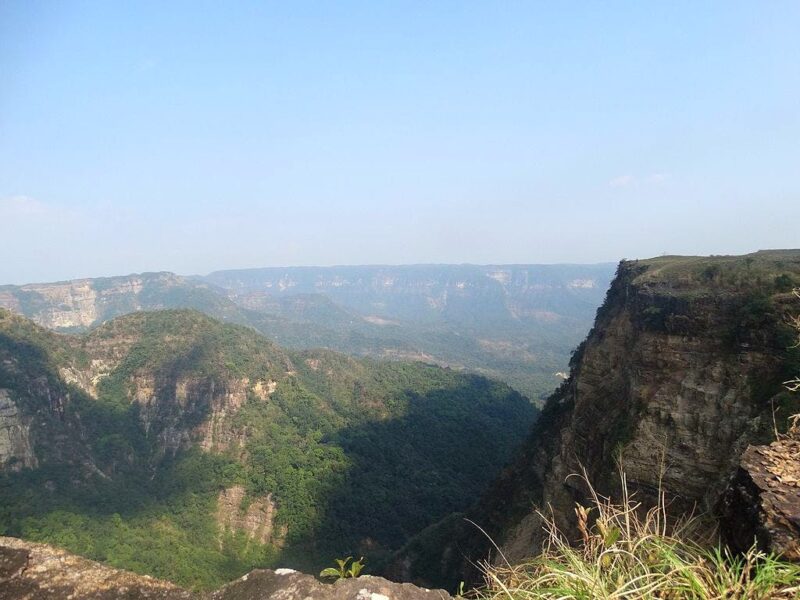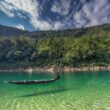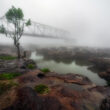Balpakram National Park is a breathtaking natural paradise located in the Indian state of Meghalaya. Nestled amidst the Garo Hills, this pristine national park offers a remarkable blend of dense forests, majestic landscapes, and a rich biodiversity. In this article, we will explore the wonders of Balpakram National Park, highlighting its unique features, diverse flora and fauna, and the conservation efforts undertaken to preserve this ecological gem.
Table of Contents
- Introduction
- Geographical Overview
- Flora of Balpakram National Park
- Fauna of Balpakram National Park
- Landforms and Attractions
- Indigenous Culture and Traditions
- Conservation Initiatives
- Threats and Challenges
- Visiting Balpakram National Park
- Conclusion
- Frequently Asked Questions (FAQs)
Geographical Overview
Balpakram National Park spans an area of approximately 220 square kilometers and is situated in the South Garo Hills district of Meghalaya. It is located at an elevation ranging from 300 meters to 800 meters above sea level. The park is blessed with diverse topography, including rugged cliffs, deep gorges, and enchanting valleys. The crystal-clear rivers that flow through the park add to its picturesque charm.
Flora of Balpakram National Park
The national park boasts a remarkable variety of flora, comprising both tropical and subtropical vegetation. The dense forests are adorned with a rich assortment of tree species, including Sal, Teak, Bamboo, and various orchids. The park is also home to several medicinal plants and herbs, which are of immense value to local communities.
Fauna of Balpakram National Park
Balpakram National Park is a haven for wildlife enthusiasts, offering a wide array of animal species. The park is famous for its resident population of Asiatic elephants, tigers, leopards, and wild buffaloes. Other notable fauna include Indian bison, deer, langurs, macaques, and a plethora of avian species. The presence of such diverse wildlife makes Balpakram an excellent destination for wildlife photography and nature enthusiasts.
Landforms and Attractions
The rugged landscapes of Balpakram National Park house several fascinating landforms that attract visitors from far and wide. One of the most notable attractions is the “Garo-Sora” formation, a dramatic cliff overlooking the vast expanse of the national park. The Nokrek Peak, the highest peak in Garo Hills, offers breathtaking panoramic views of the surrounding valleys. Additionally, the beautiful Simsang River and its cascading waterfalls add to the park’s allure.
Indigenous Culture and Traditions
The indigenous Garo people have a strong connection with Balpakram National Park, considering it a sacred land rich in cultural heritage. The Garos have a profound understanding of the park’s flora and fauna, which is reflected in their folklore, rituals, and traditional practices. Visitors have the opportunity to experience the warm hospitality of the Garo community and learn about their unique customs and traditions.
Conservation Initiatives
Recognizing the ecological significance of Balpakram National Park, several conservation initiatives have been undertaken to safeguard its natural resources. The park has been designated as a protected area, and efforts are made to combat deforestation, promote sustainable tourism, and raise awareness about wildlife conservation among the local communities. These conservation efforts are crucial in preserving the park’s delicate ecosystem for future generations.
Threats and Challenges
Despite the conservation efforts, Balpakram Park faces certain threats and challenges. Encroachment, illegal poaching, and unsustainable practices pose a risk to the park’s biodiversity. Climate change also has an impact on the delicate balance of the ecosystem. To ensure the long-term survival of Balpakram, it is imperative to address these challenges through collaborative efforts involving the government, local communities, and environmental organizations.
Visiting Balpakram National Park
For those seeking an unforgettable experience in the lap of nature, visiting Balpakram Park is a must. The park offers trekking opportunities, allowing visitors to explore its captivating trails and witness the mesmerizing beauty of the Garo Hills. Permits are required to enter the park, and it is advisable to engage local guides who possess extensive knowledge about the park and its wildlife.
Conclusion
Balpakram National Park is a true gem of Meghalaya, enchanting visitors with its pristine wilderness and awe-inspiring landscapes. From its diverse flora and fauna to its cultural significance, the park offers a unique experience for nature lovers and adventurers alike. As we continue to appreciate the wonders of Balpakram, let us also strive to protect and preserve this natural treasure for future generations to cherish.
Similar Articles
Frequently Asked Questions (FAQs)
1. How can I reach Balpakram National Park?
To reach Balpakram Park, one can travel by road from Tura, which is the nearest town. Regular buses and taxis are available for transportation.
2. Is accommodation available near the park?
Yes, there are accommodations available near Balpakram Park. Forest rest houses and guesthouses provide comfortable lodging options for visitors.
3. Can I go trekking in the park?
Yes, trekking is allowed in Balpakram Park. However, it is advisable to hire a local guide for a safe and enriching experience.
4. What is the best time to visit the park?
The best time to visit Balpakram Park is during the winter months, from November to February when the weather is pleasant and the wildlife sightings are more frequent.
5. Are there any restrictions on photography in the park?
Photography is allowed in Balpakram Park. However, it is essential to respect the park’s guidelines and avoid disturbing wildlife while capturing photographs.









